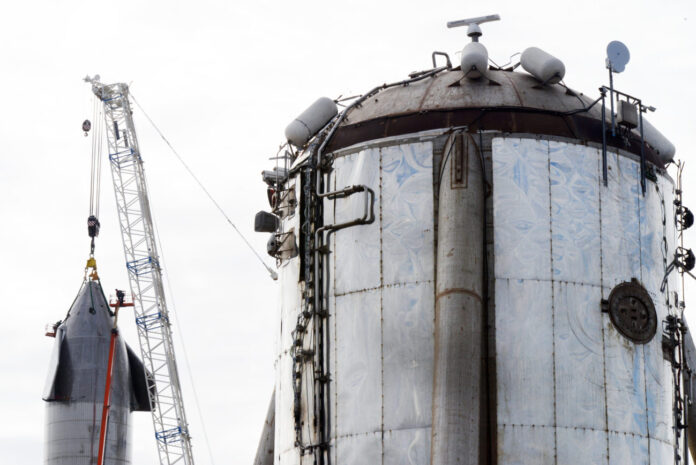It was a year of milestones for SpaceX’s Starship development program at Boca Chica, most recently on Dec. 9, when the SN8 achieved the first, mostly successful, high-altitude flight of a Starship prototype.
The test, which ended in an explosion when the SN8 landed too hard after a well-executed descent from 41,000 feet, was preceded by the successful launch and landing of the SN5, the first flight of a full-size Starship prototype. The 500-foot hop of the SN5 on Aug. 4 was followed by the Sept. 3 flight of the SN6, which also flew to 500 feet before touching down. SN stands for “serial number.”
In addition to achieving the first high-altitude Starship test, the late SN8 was the first multi-engine Starship prototype, fitted with three SpaceX-designed Raptor engines compared to one each for the earlier prototypes, the first of which was Starhopper, which many likened to a flying water tower. Starhopper made its first and only test flight at Boca Chica on Aug. 27, 2019.
Starship is being developed as a fully reusable vehicle to one day carry cargo and humans to Earth orbit, the moon and Mars, though SpaceX founder and CEO Elon Musk said in September that it would be a long time before Starship goes up with human crew or passengers.
“We’ve got to first make the thing work, automatically deliver satellites and do hundreds of missions with satellites before we put people on board,” he said during a virtual “Humans to Mars” conference.
Not all went swimmingly for SpaceX’s Boca Chica operations in 2020. The SN1 ruptured on the launch pad during a pressurization test in February. The SN2 survived a series of similar tests and was retired to make way for testing of the SN3, which was destroyed due to a “testing configuration error,” according to Musk. The SN4 prototype went out in more spectacular fashion, exploding on the launch stand on May 29 due to a leaky propellant connection.

SpaceX has begun construction of its first Super Heavy booster at the Boca Chica Starship production complex. The Super Heavy, eventually to be fitted with 28 Raptor engines, would be responsible for helping Starship get to orbit and beyond. While the Federal Aviation Administration in May granted SpaceX a two-year license for suborbital tests of Starship, it does not cover the suborbital and orbital testing of Super Heavy that SpaceX is working toward. A public scoping period is underway as part of a new environmental assessment of this next phase of testing.
“Mars, here we come!!” Musk tweeted after the Dec. 9 test flight. “Thank you, South Texas for your support. This is the gateway to Mars.”
He attributed SN8’s explosive landing to low “header tank” pressure, a problem SpaceX aims to resolve with the SN9, which was moved from the Boca Chica production complex to the launch pad nearer the beach on Dec. 22 for Starship’s second high-altitude flight. Meanwhile, several more Starship prototypes are in various stages of assembly in addition to the first Super Heavy.
The SN9 test flight is expected to take place early in the new year. For now, the silver rocket is perched atop its launch stand a stone’s throw from the SN8’s charred and mangled nosecone, undergoing testing for the pending flight, all of it serving as a huge draw for the legions of space tourists who had never heard of Boca Chica Beach before SpaceX.
Meanwhile, the company has succeeded in buying out most of the residents of Boca Chica Village near the production complex, with only a handful of holdouts remaining. The tiny unincorporated neighborhood is now occupied largely by SpaceX employees.




